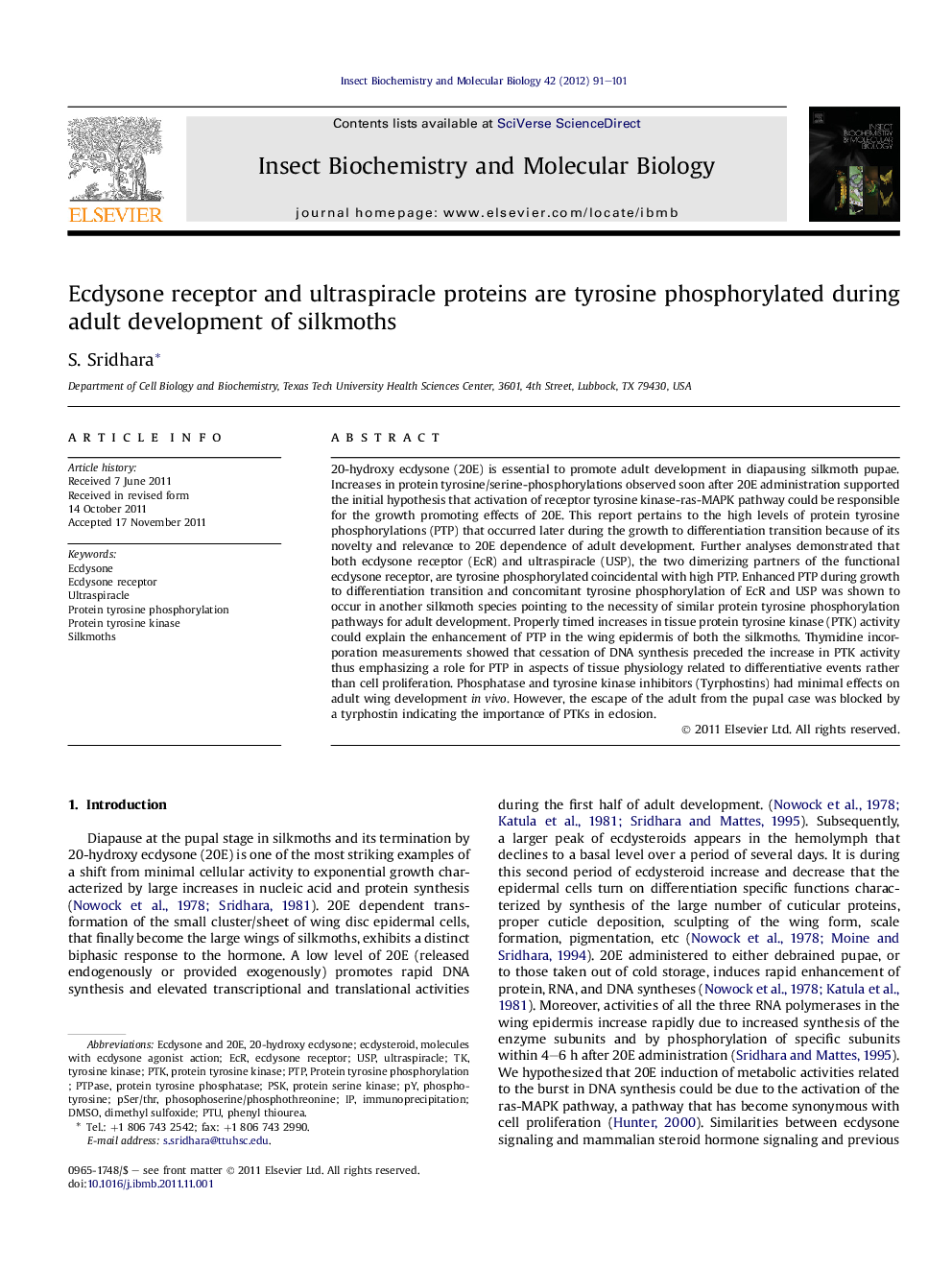| کد مقاله | کد نشریه | سال انتشار | مقاله انگلیسی | نسخه تمام متن |
|---|---|---|---|---|
| 1982312 | 1062277 | 2012 | 11 صفحه PDF | دانلود رایگان |

20-hydroxy ecdysone (20E) is essential to promote adult development in diapausing silkmoth pupae. Increases in protein tyrosine/serine-phosphorylations observed soon after 20E administration supported the initial hypothesis that activation of receptor tyrosine kinase-ras-MAPK pathway could be responsible for the growth promoting effects of 20E. This report pertains to the high levels of protein tyrosine phosphorylations (PTP) that occurred later during the growth to differentiation transition because of its novelty and relevance to 20E dependence of adult development. Further analyses demonstrated that both ecdysone receptor (EcR) and ultraspiracle (USP), the two dimerizing partners of the functional ecdysone receptor, are tyrosine phosphorylated coincidental with high PTP. Enhanced PTP during growth to differentiation transition and concomitant tyrosine phosphorylation of EcR and USP was shown to occur in another silkmoth species pointing to the necessity of similar protein tyrosine phosphorylation pathways for adult development. Properly timed increases in tissue protein tyrosine kinase (PTK) activity could explain the enhancement of PTP in the wing epidermis of both the silkmoths. Thymidine incorporation measurements showed that cessation of DNA synthesis preceded the increase in PTK activity thus emphasizing a role for PTP in aspects of tissue physiology related to differentiative events rather than cell proliferation. Phosphatase and tyrosine kinase inhibitors (Tyrphostins) had minimal effects on adult wing development in vivo. However, the escape of the adult from the pupal case was blocked by a tyrphostin indicating the importance of PTKs in eclosion.
Figure optionsDownload high-quality image (86 K)Download as PowerPoint slideHighlights
► Protein tyrosine phosphorylation (PTP) increases ∼midway of adult development in silkmoths.
► Concurrently ecdysone receptor and ultraspiracle proteins get tyrosine phosphorylated.
► Tissue protein tyrosine kinase activity (PTK) greatly increases at this time to account for enhanced PTP.
► DNA synthesis ceases prior to increases in PTK and PTP.
► Phosphatase and PTK inhibitors have minimal effects on wing development in vivo.
Journal: Insect Biochemistry and Molecular Biology - Volume 42, Issue 2, February 2012, Pages 91–101